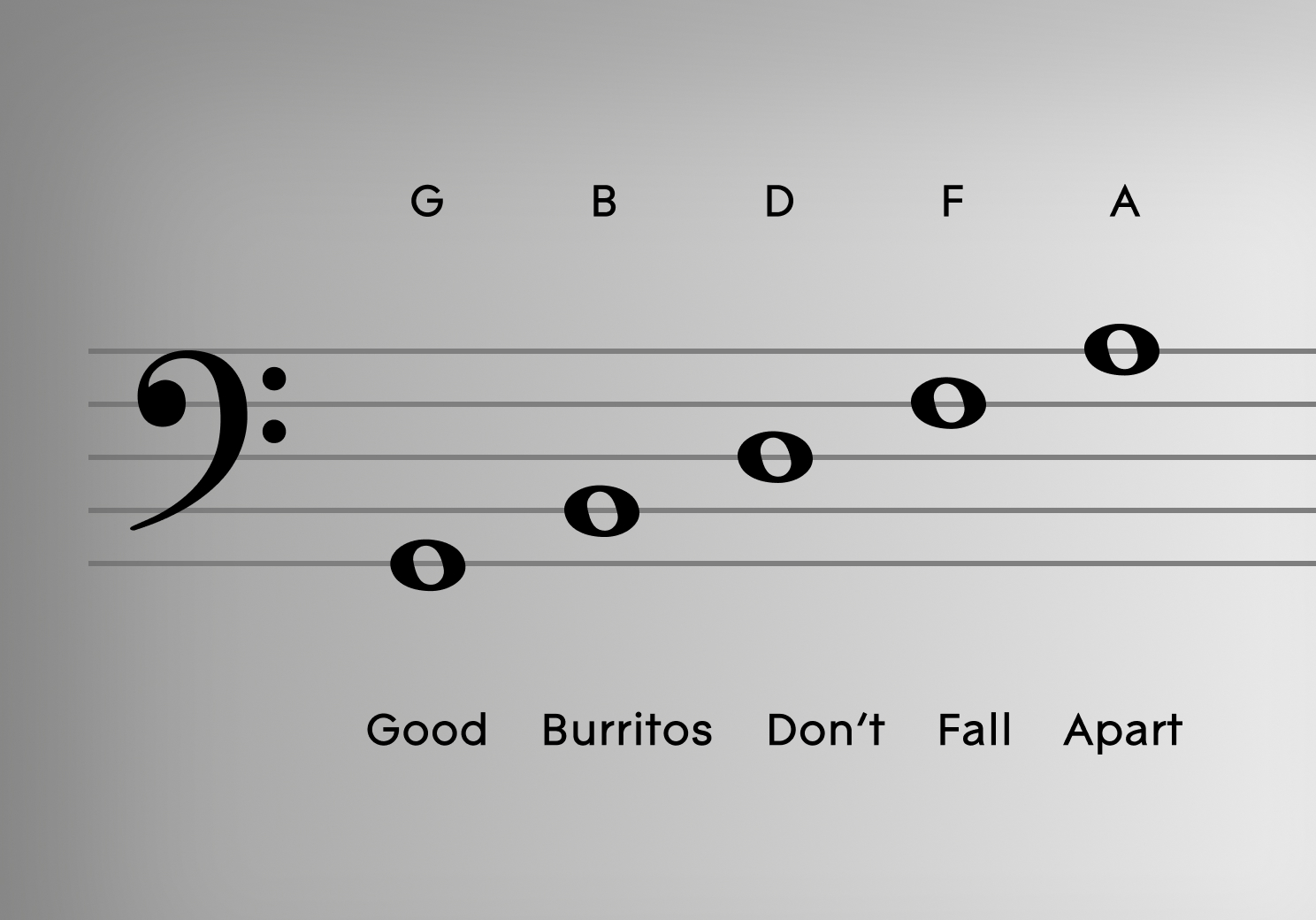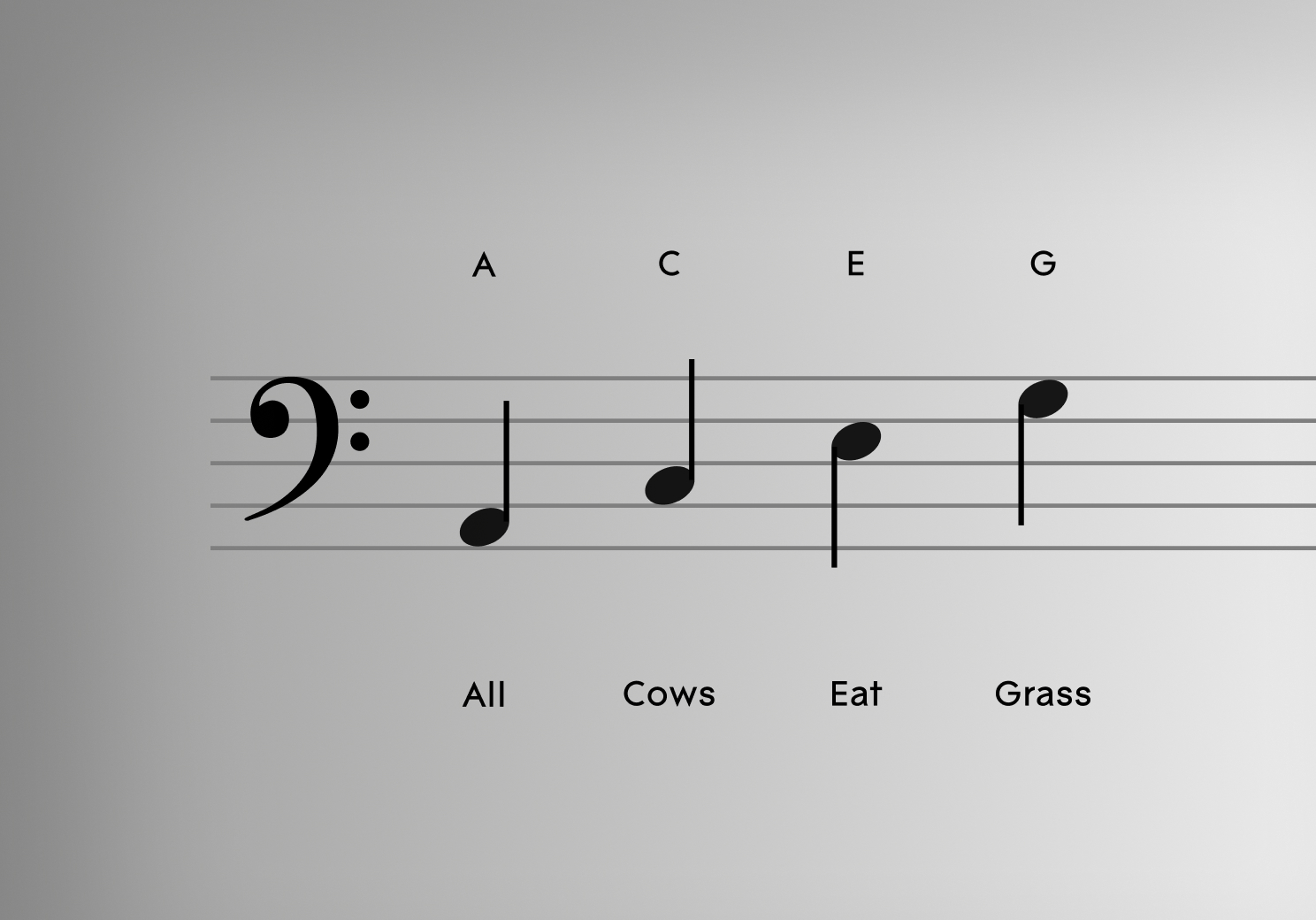What is bass clef? Notes and how to read them
It’s likely that your piano learning will begin with getting familiar with the treble clef. As you start to explore playing with the left hand, it’s time to learn about the bass clef.
What is the bass clef?
The bass clef is a musical symbol used in Western music to indicate the pitch of notes below middle C (or C4). It is an octave lower than the treble clef and often used for low-pitched instruments such as bass guitars, double basses, cellos, tuba, bassoon, and for the left hand when playing synthesizers and keyboard instruments. The bass clef is also known as the F-clef as it loops around the note F on the staff.
For a guided curriculum that teaches you this and other fundamentals of music — as well as how to play your favorite songs — check out the ROLI Piano System.
How is the bass clef written?
The bass clef curls around the second line from the top of the staff - which is the note F. The two small dots on either side of this line also show us which note is F. When reading music written in bass clef, some basic knowledge is needed to decipher the notes. It’s essential to remember that each line and space on the staff refer to a different note or a different white key on the piano, shown by the letters A-G. So the space above F is the note G and the space below F is the note E.
What is the staff?
The staff is the foundation on which all notes are drawn. Each space or line on the staff represents a white note on the piano. A ledger line is a small line that is used at the top or bottom of the staff to extend the staff if notes are required above or below its standard five lines.
How do you read the notes on a bass clef?
The notes on the bass clef are GBDFA.

It’s useful to have a mnemonic that helps you to remember the notes on a bass clef, such as Good Burritos Don’t Fall Apart or Grizzly Bears Don’t Fear Anything or Great Big Dogs Frighten Auntie.
The notes between the lines are ACEG which is easy to remember with the mnemonic All Cows Eat Grass.

What are accidentals?
Once familiar with the notes, it’s also important to remember that there are several different accidentals that can be used in bass clef. These include sharps (♯), flats (♭) and naturals (♮). These symbols indicate a change in the pitch of a note, usually going up or down by one semitone.
It’s important to develop an understanding of bass clef if you will use any low-pitched instruments in your playing or performances. Taking time to familiarize yourself with the notes on the staff and how accidentals affect them is essential for successful playing. With practice and patience, bass clef can soon be mastered!
The most important tip to remember when learning bass clef is to take it step by step and not rush things.
Learn music with ROLI
The ROLI Learn app, available for Apple and Android devices, pairs with ROLI Piano or Piano M to teach you the fundamentals of piano playing and music theory via 1,200+ licensed hit songs, more than 300 video lessons with real teachers, and a host of engaging games and exercises.
Join the ROLI community